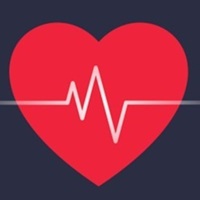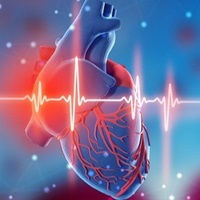- Home
- Health resources
- Health and wellbeing
- Men's health
Men's health issues
This is a guide to the health issues that affect men and how to take precautionary actions to minimise the risk of their occurrence. Common conditions affecting men include coronary heart disease, prostate cancer, depression and diabetes. With these in mind, it’s important to watch out for their signs and symptoms and learn how to reduce your risk where you can.

Prostate cancer
After some forms of skin cancer, prostate cancer is the most common cancer in men. Prostate cancer causes abnormal cells to develop within the prostate gland. These cells grow and multiply, creating a tumour.
Understand your risk
The many risk factors for developing prostate cancer include:
- increasing age
- family history – you have a higher risk if your brother or father had the condition
- eating a diet high in fat and with not enough fruits and vegetables
- being overweight
While you can’t control your age or family history, you can manage your weight and maintain a healthy diet and lifestyle.
Know the signs and symptoms
The symptoms of prostate cancer don’t usually appear until the cancer has grown quite large. When this happens, symptoms can include:
- feeling a frequent and sudden need to urinate
- discomfort when urinating
- finding blood in your urine or semen
- pain in the lower back, upper thighs or hips
These symptoms alone don’t mean you have prostate cancer, it could just be that you have an enlarged prostate (or benign prostatic hyperplasia).

Depression
According to Beyond Blue, one in eight men will experience depression in their lives and one in five men will experience anxiety. Depression is more than a passing low mood. It can be feeling sad for weeks on end, having low energy and low motivation. It can also be a feeling of numbness rather than sadness.
Some men can be reluctant to seek help for depression or other mental health issues. But it’s a serious condition and one which requires help and support in recovery.
Understand your risk
Risk factors for men developing depression include:
- physical health problems
- relationship problems and breakdowns
- employment problems
- social isolation
- change in living arrangements (separation and divorce)
- pregnancy and birth of a baby
- drug and alcohol use
Know the signs and symptoms
Symptoms of depression in men include:
- moodiness and irritability
- hopelessness and helplessness
- loss of appetite or over-eating
- loss of interest in usual activities
- acting out of character
- increase in alcohol or drug intake
- suddenly becoming shy or more confident
- withdrawing from close family and friends
You can find out more about the symptoms of depression in men at MensLine. If you think you might be experiencing depression, it’s important to get help.

Diabetes
Diabetes is one of the biggest challenges and according to Diabetes Australia, 280 people living in Australia develop diabetes every day. This works out at one person every five minutes. Diabetes is the name given to a group of conditions where the body can’t maintain a healthy level of glucose (type of sugar) in the blood. The three types of diabetes are type 1, type 2 and gestational diabetes.
Understand your risk
Type 1 diabetes risk factors can include:
- family history of Type 1 diabetes
- having a virus at an early age may trigger type 1 diabetes
- living in a colder climate
It’s unclear if there are lifestyle related risk factors for Type 1 diabetes.
Type 2 diabetes is often lifestyle related. Lifestyle risk factors can include:
- Obesity
- Physical inactivity
- Smoking
- Unhealthy diet
People are also more likely to experience Type 2 Diabetes if they have high cholesterol, hypertension, or high triglyceride levels.
Know the signs and symptoms
When glucose levels in the blood rise, it can trigger a range of symptoms. These symptoms can include:
- feeling thirsty
- urinating frequently, especially at night
- feeling very tired
- weight loss and loss of muscle bulk
Seeing your GP
If you’re experiencing any of the symptoms of diabetes, or have concerns about your risk, it’s best to see your GP. They can assess any symptoms and make a diagnosis if necessary. You can access a GP through online doctors or through our network.

Coronary heart disease
According to the Australian Institute of Health and Welfare, coronary heart disease was the leading cause of death for men and women in 2017. Coronary heart disease and ischaemic heart disease are terms that describe what happens in the body when a build-up of fatty substances in the coronary arteries blocks the blood supply to the heart.
Understand your risk
There are certain risk factors that raise a person’s likelihood for developing coronary heart disease. You can reduce your risk of coronary heart disease by making healthy lifestyle choices such as:
- avoiding smoking or second-hand smoke
- eating a healthy diet
- exercising and staying active
- maintaining a healthy weight
- managing stress levels
If you have concerns about your heart health, it’s best to see your doctor. If your doctor thinks you’re at risk of developing coronary heart disease, they can assess your heart health. This can include assessing your medical and family history, lifestyle factors and requesting a blood test. They can also offer suggestions for lowering your risk factors.
If you’re 45 years or older you should have a heart health check up every two years. To find out more, read heart health checks at the Heart Foundation.
Know the signs and symptoms
It’s important to remember that not everyone experiences the same symptoms with coronary heart disease, and some people don’t experience any symptoms at all.

Angina (chest pain)
If your arteries have a partial block, you could experience chest pain. This is also known as angina.
The most common symptoms of angina can include:
- pain or discomfort in the middle of the chest
- pain with breathlessness and sweating
- pressure or a feeling of tightness in the chest
- radiating pain to the neck, jaw and left arm, or both arms
- sometimes, radiating pain in the upper back and shoulders

Heart attacks
If there is a complete blockage in your arteries, you could experience a heart attack. The warning signs for a heart attack differ from person to person.
When having a heart attack, you may experience pain, pressure, heaviness or tightness in one or more parts of your upper body including your chest, shoulders, neck, arms, jaw or back.
You may also experience the following symptoms:
- nausea
- dizziness
- cold sweats
- shortness of breath
If you experience warning signs of a heart attack, call triple zero (000) for an ambulance.
To learn more, read heart attack symptoms at the Heart Foundation.
Sources
https://www.healthdirect.gov.au/coronary-heart-disease-and-atherosclerosis
https://www.healthdirect.gov.au/what-causes-coronary-heart-disease
https://www1.racgp.org.au/newsgp/clinical/men%E2%80%99s-and-women%E2%80%99s-health-side-by-side
https://www.betterhealth.vic.gov.au/health/conditionsandtreatments/mens-health
https://www.heartfoundation.org.au/your-heart/know-your-risks/heart-health-check
http://www.choosingwisely.org.au/recommendations/racgp
https://www.healthdirect.gov.au/prostate-cancer
https://www.healthymale.org.au/mens-health/prostate-cancer
https://www.beyondblue.org.au/who-does-it-affect/men
https://mensline.org.au/signs-and-symptoms-of-depression/depression/
https://www.diabetesaustralia.com.au/diabetes-in-australia
All information contained in this article is intended for general information purposes only. The information provided should not be relied upon as medical advice and does not supersede or replace a consultation with a suitably qualified healthcare professional.